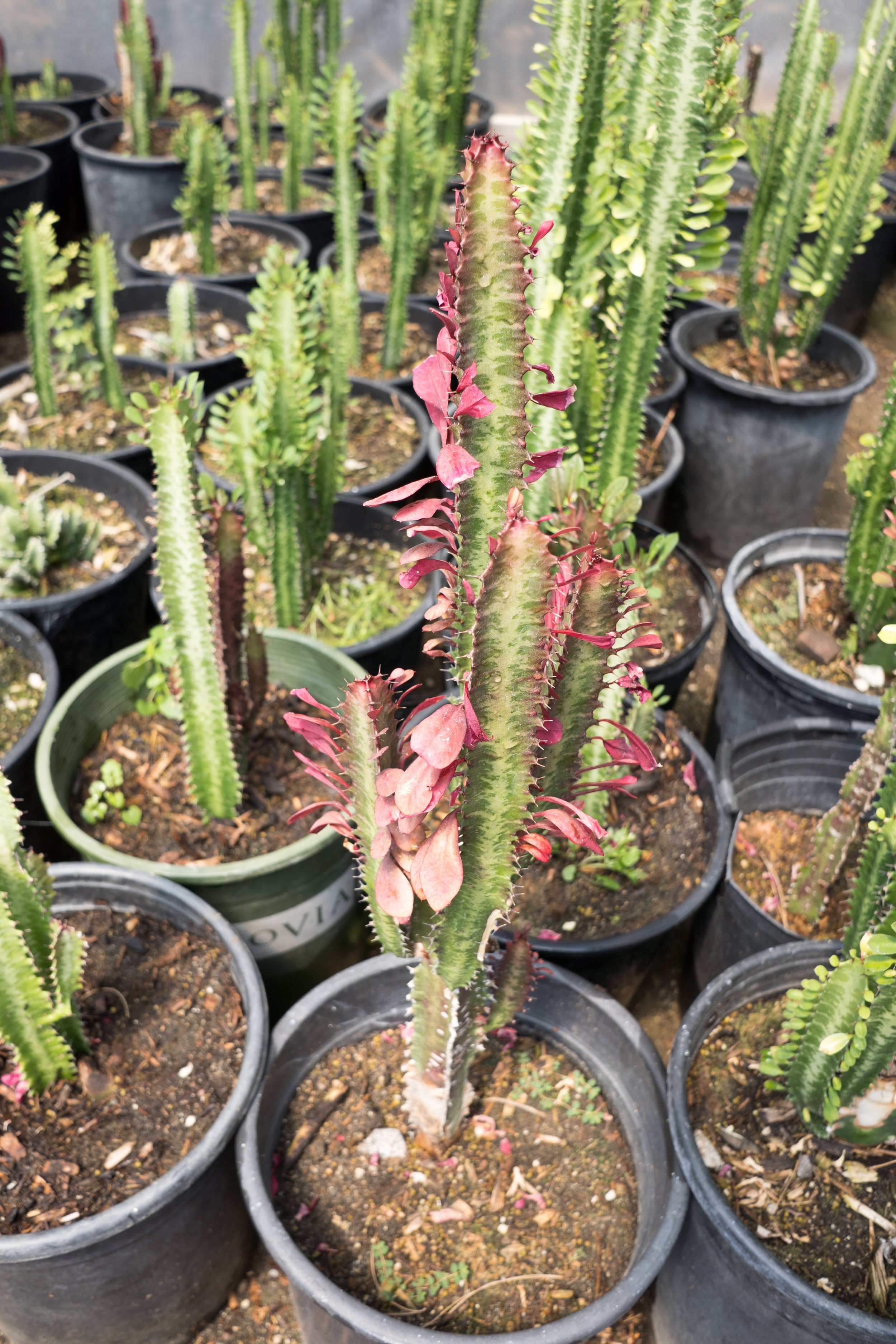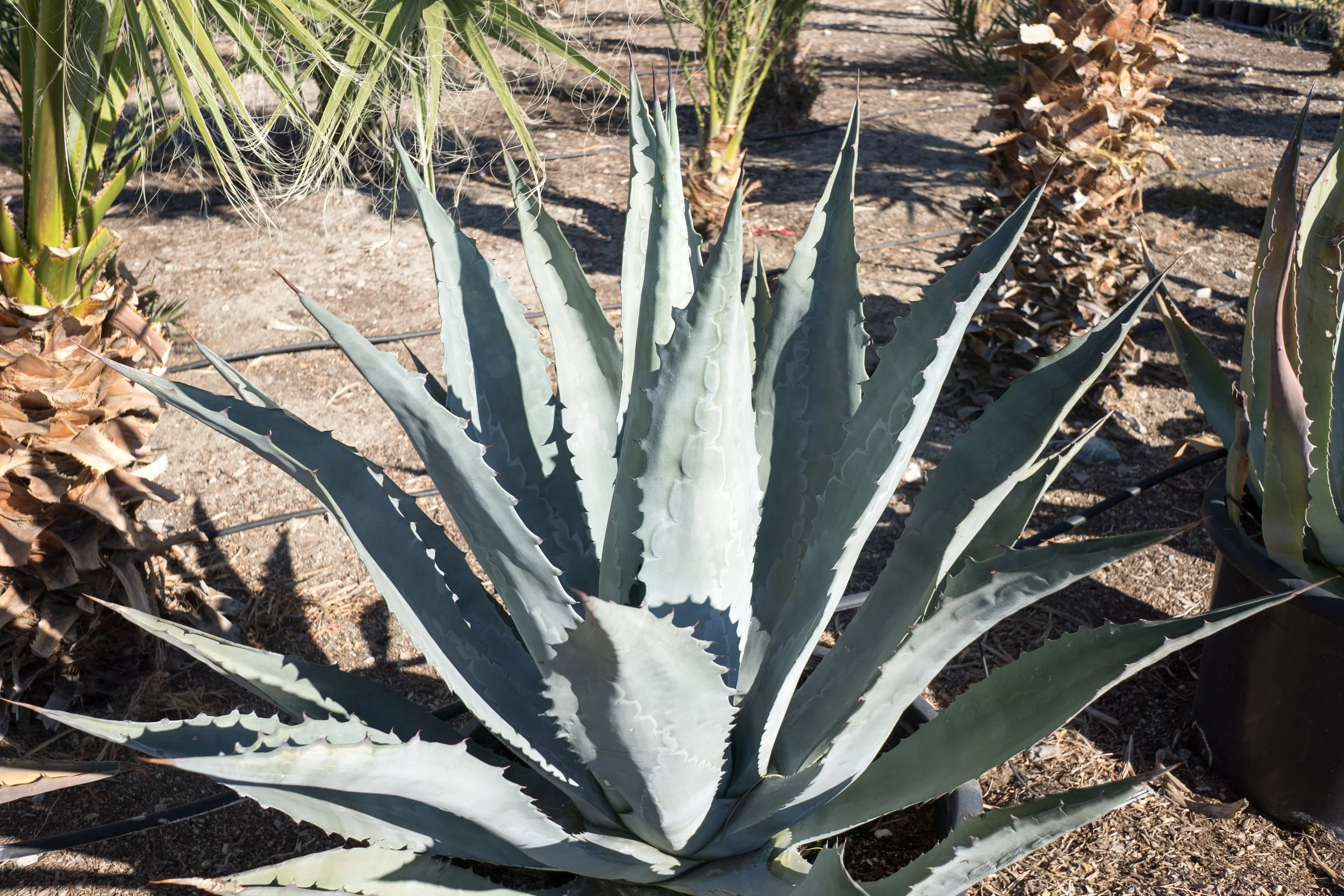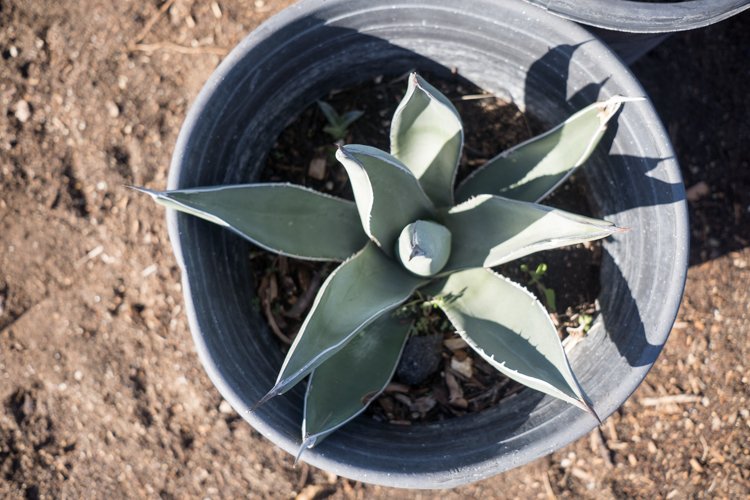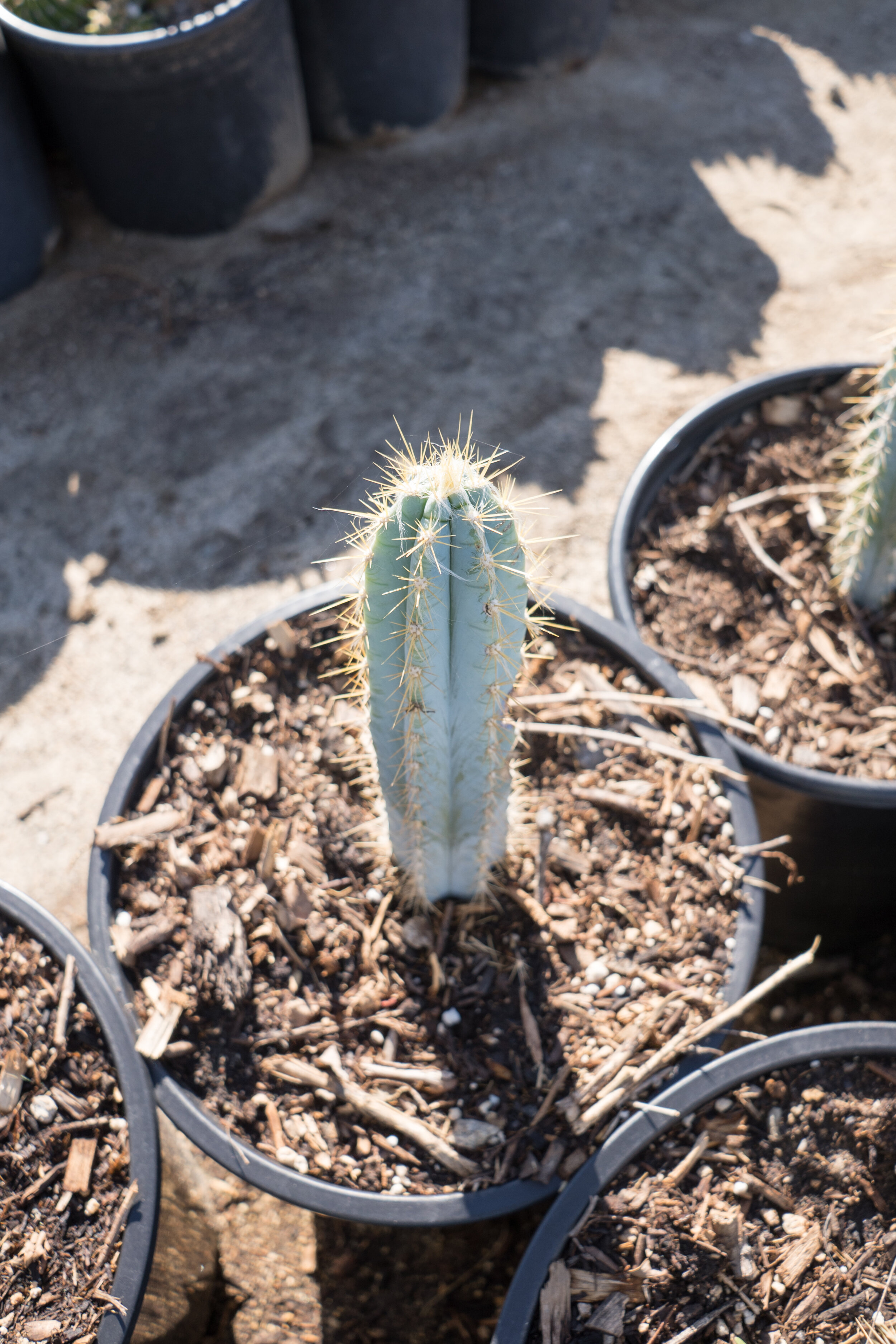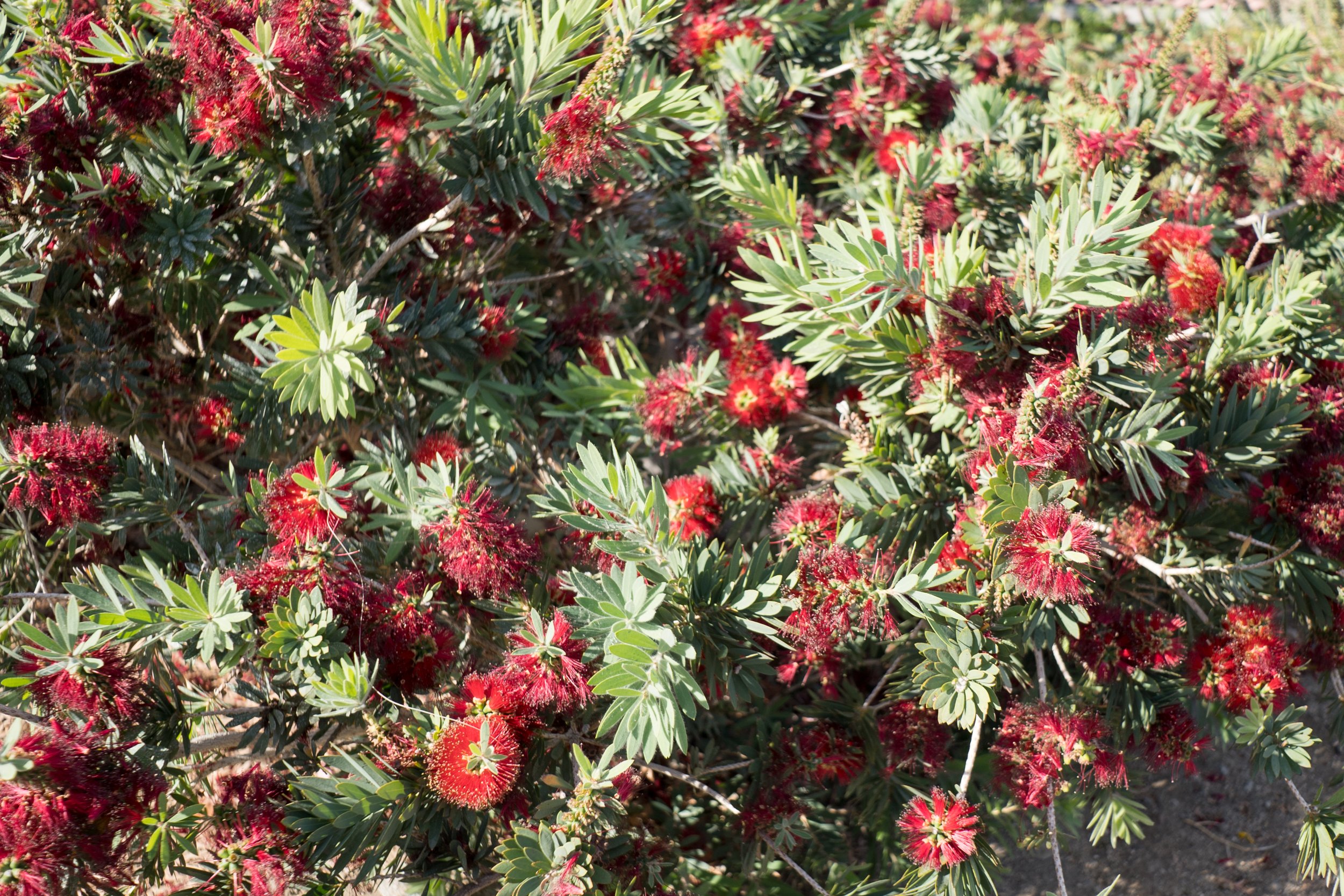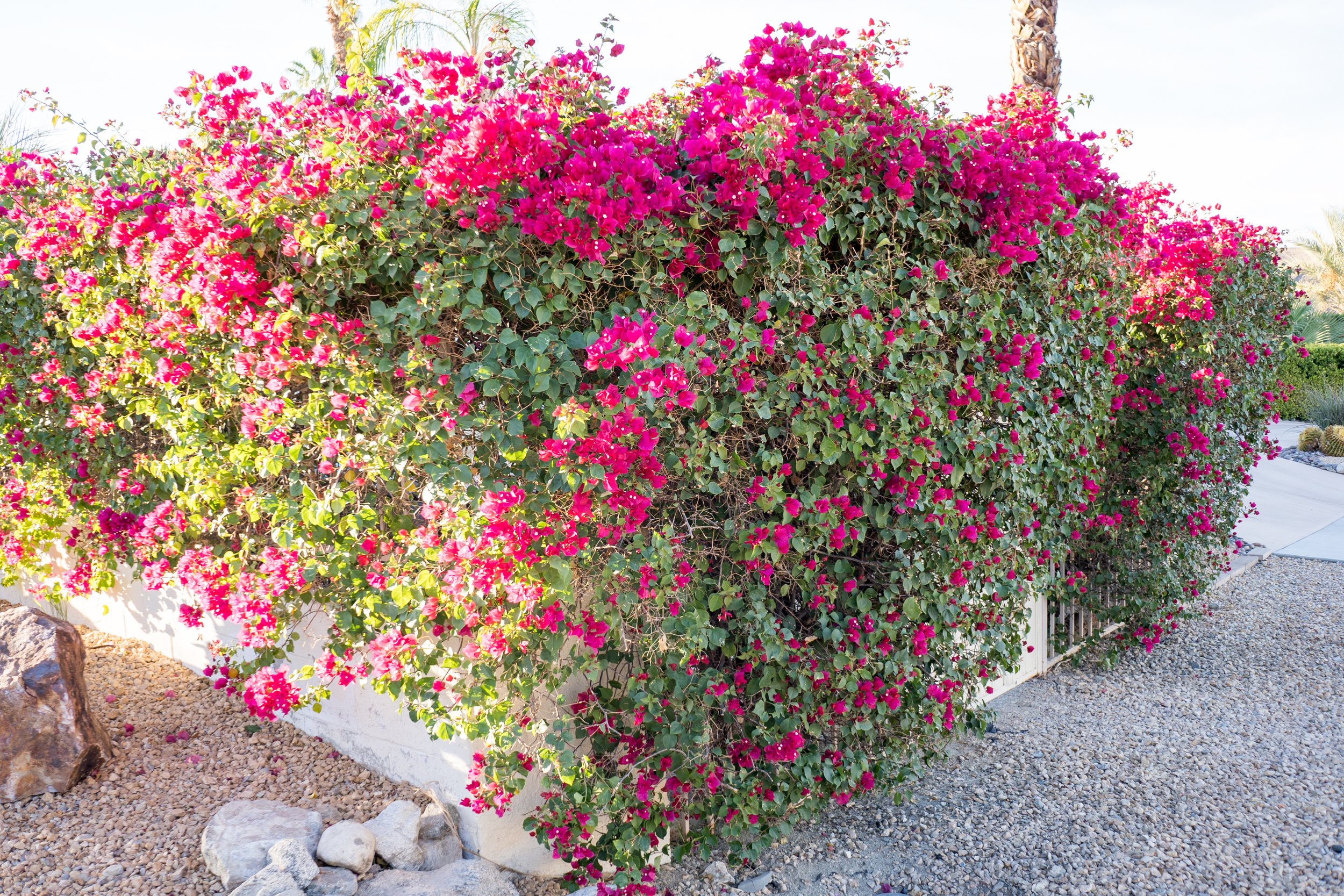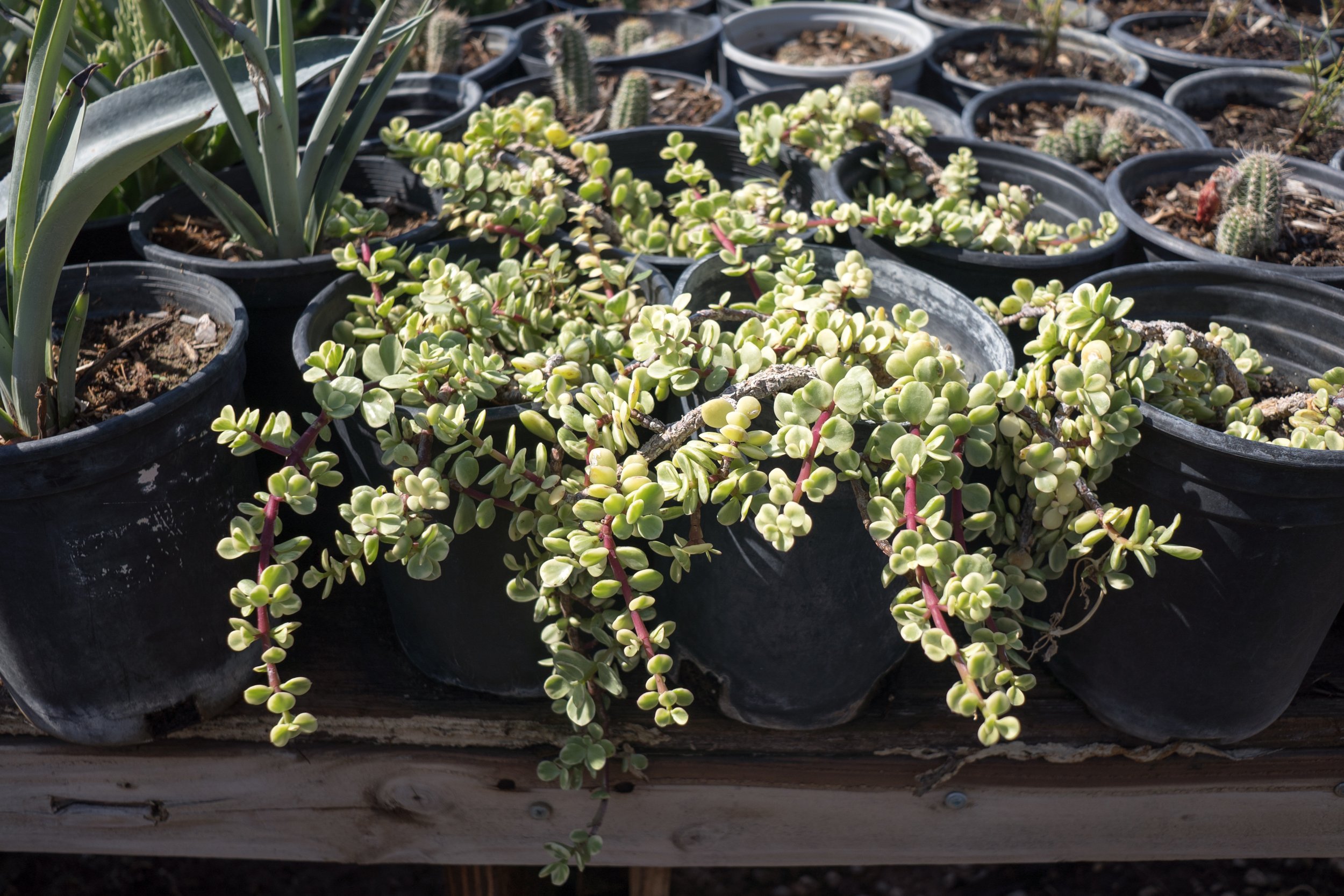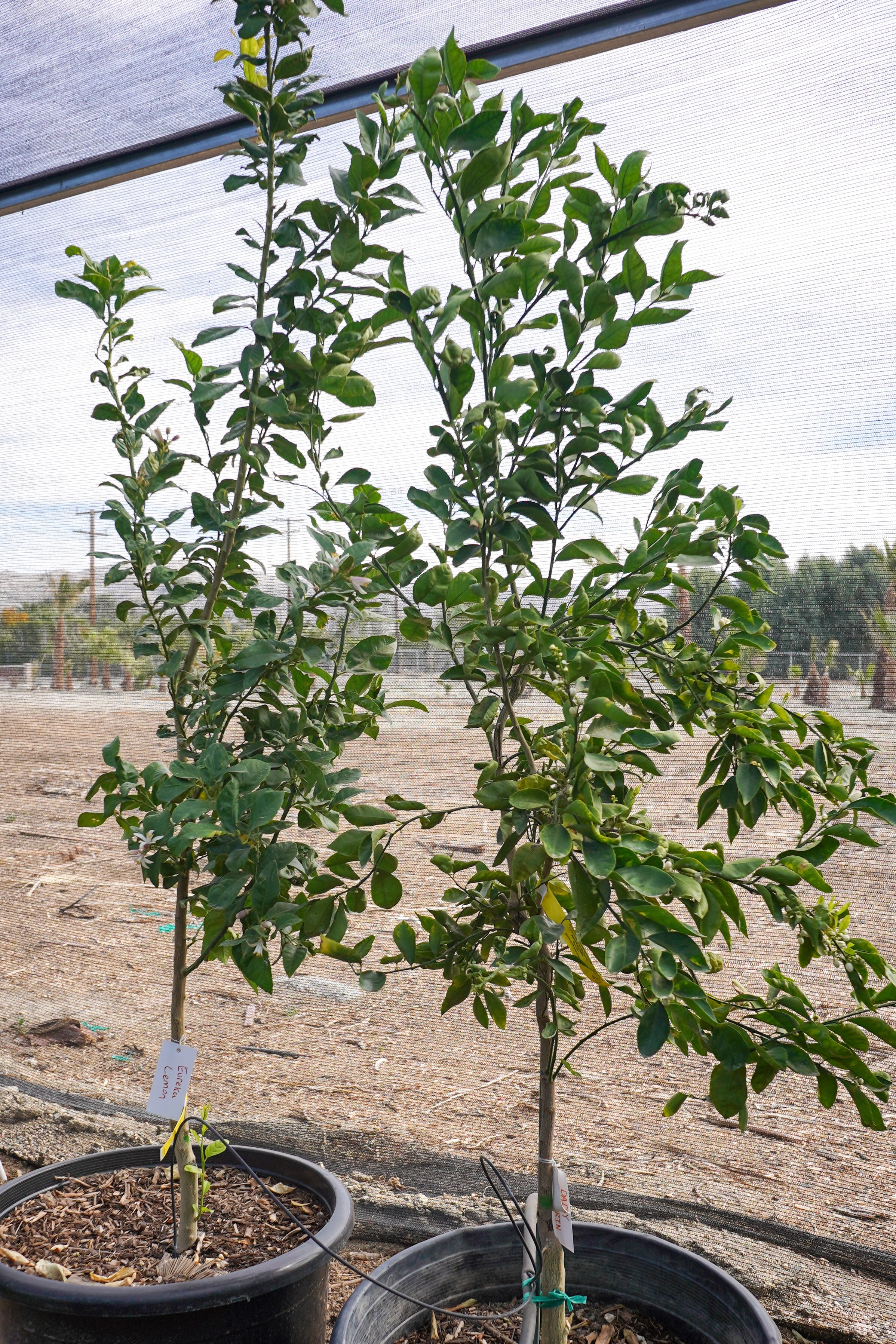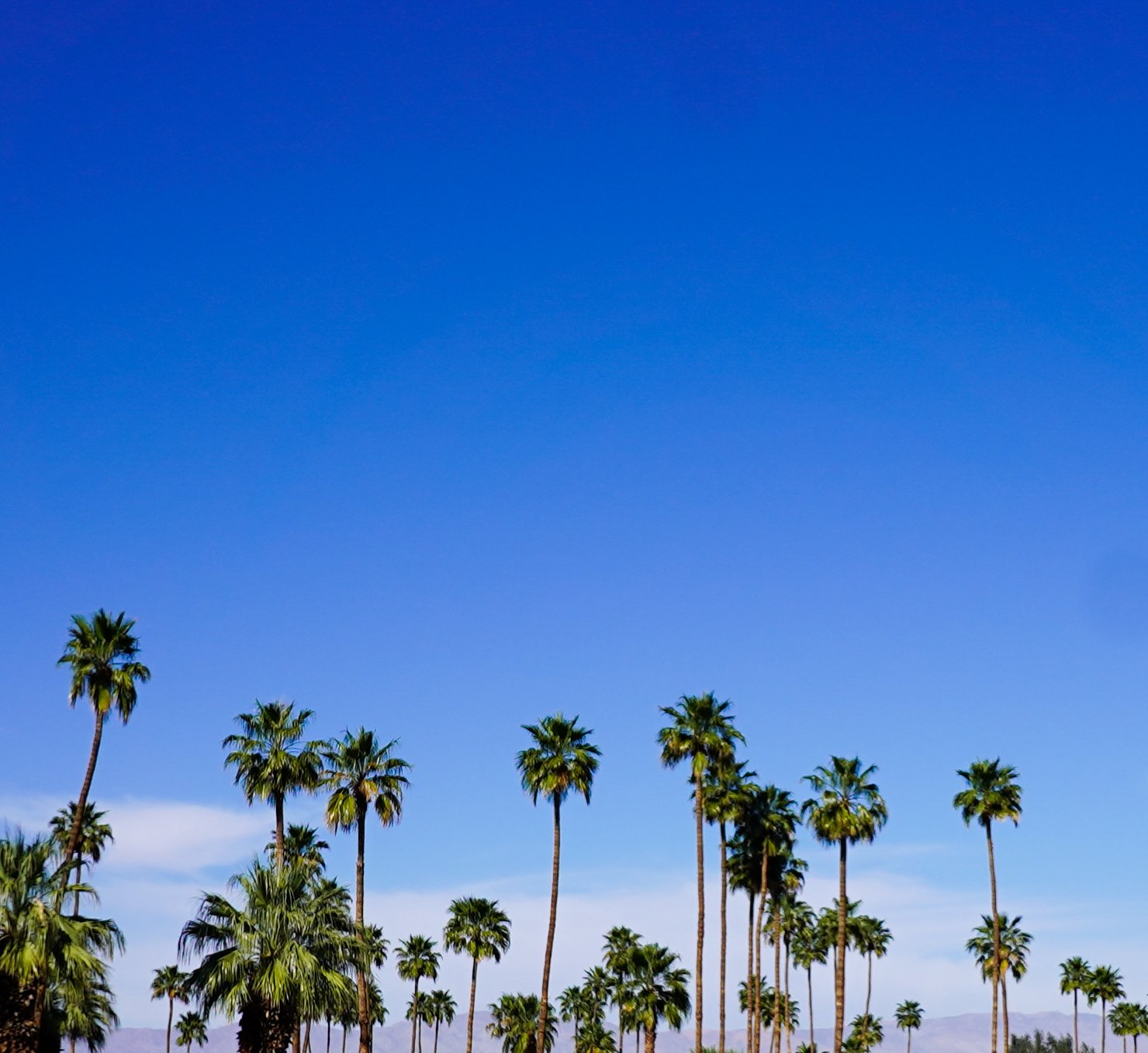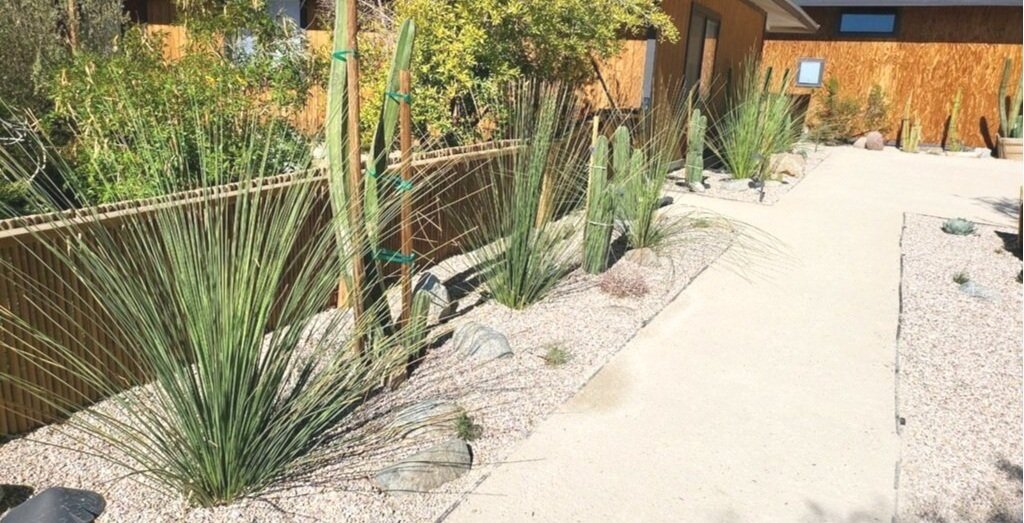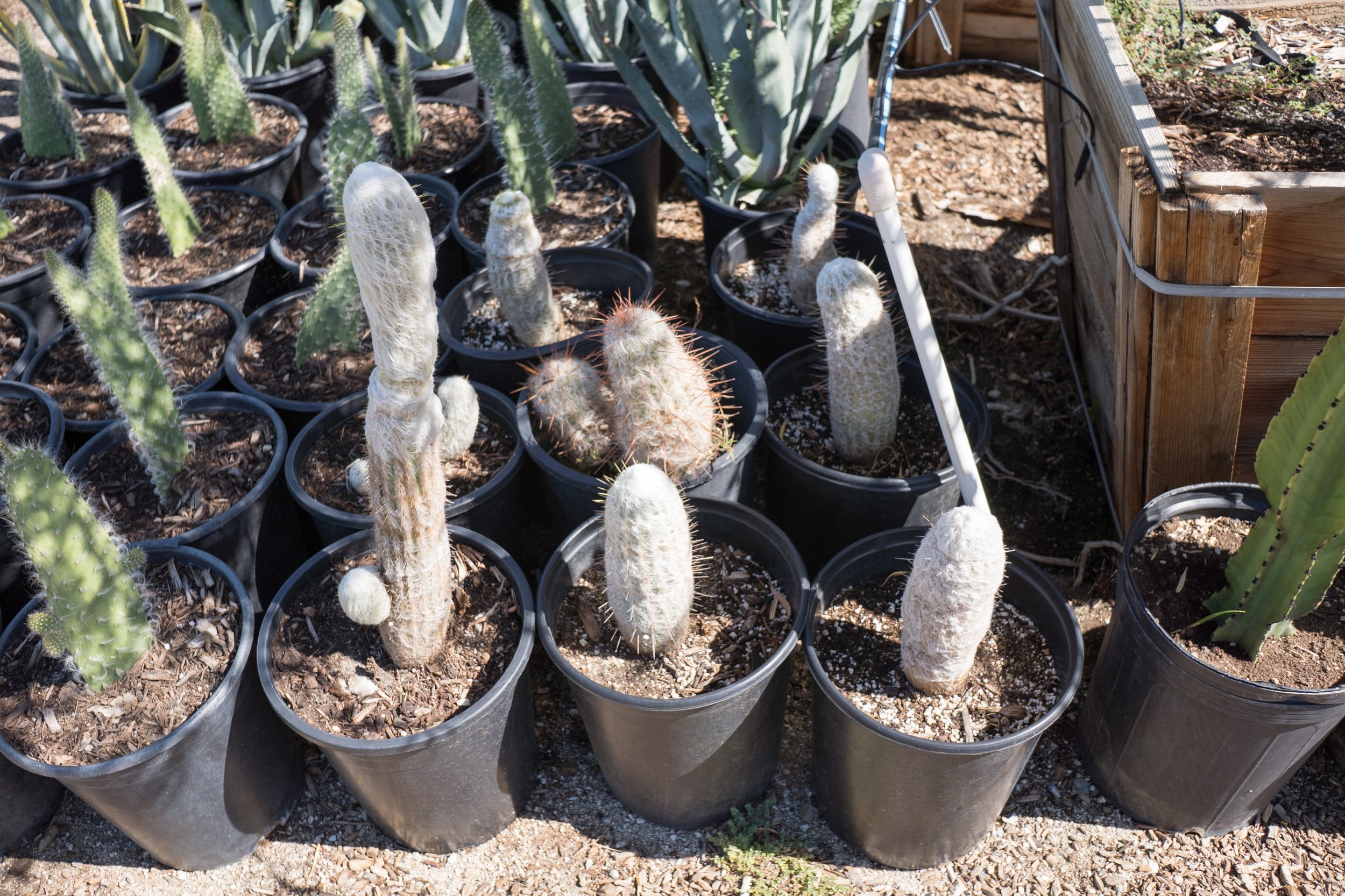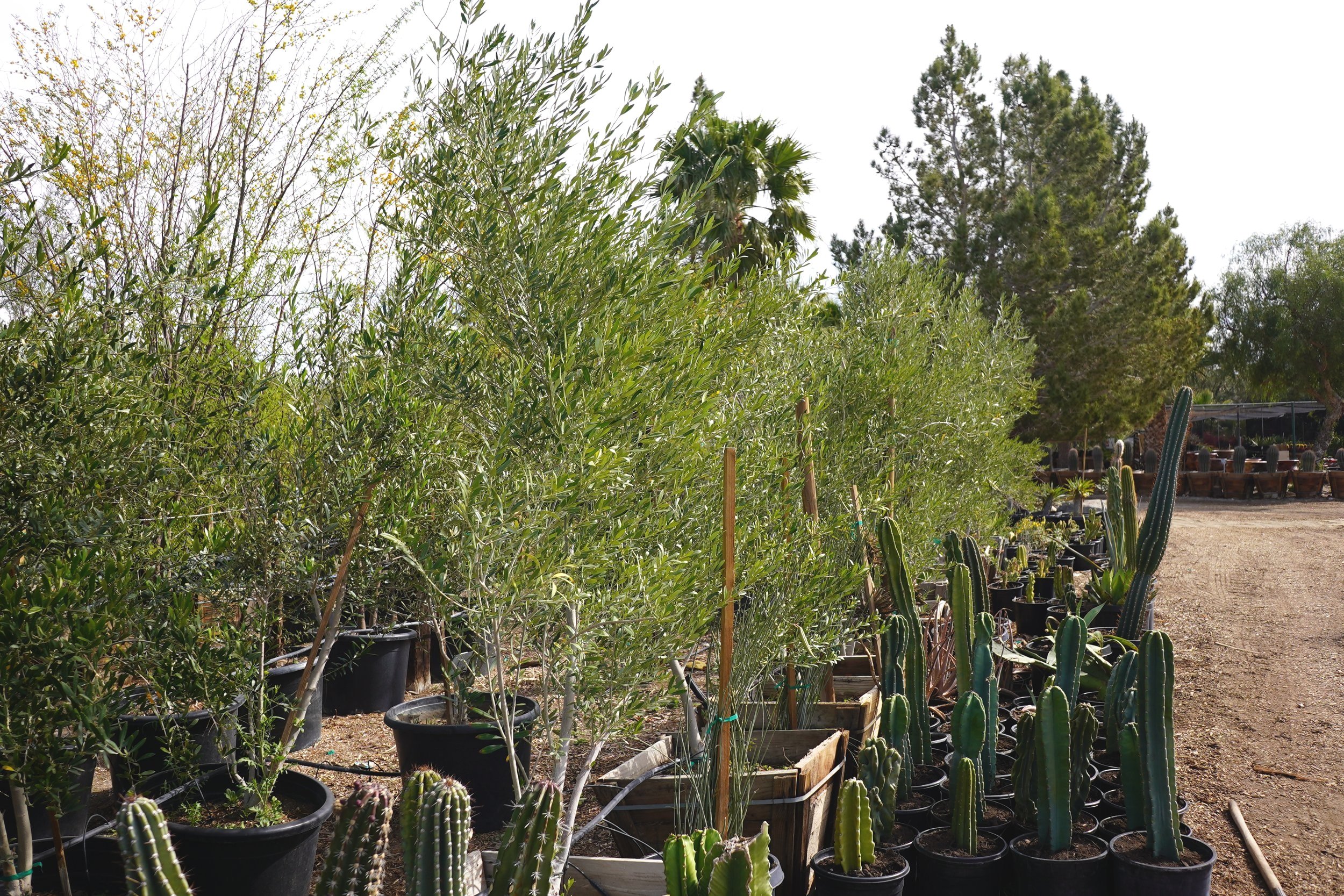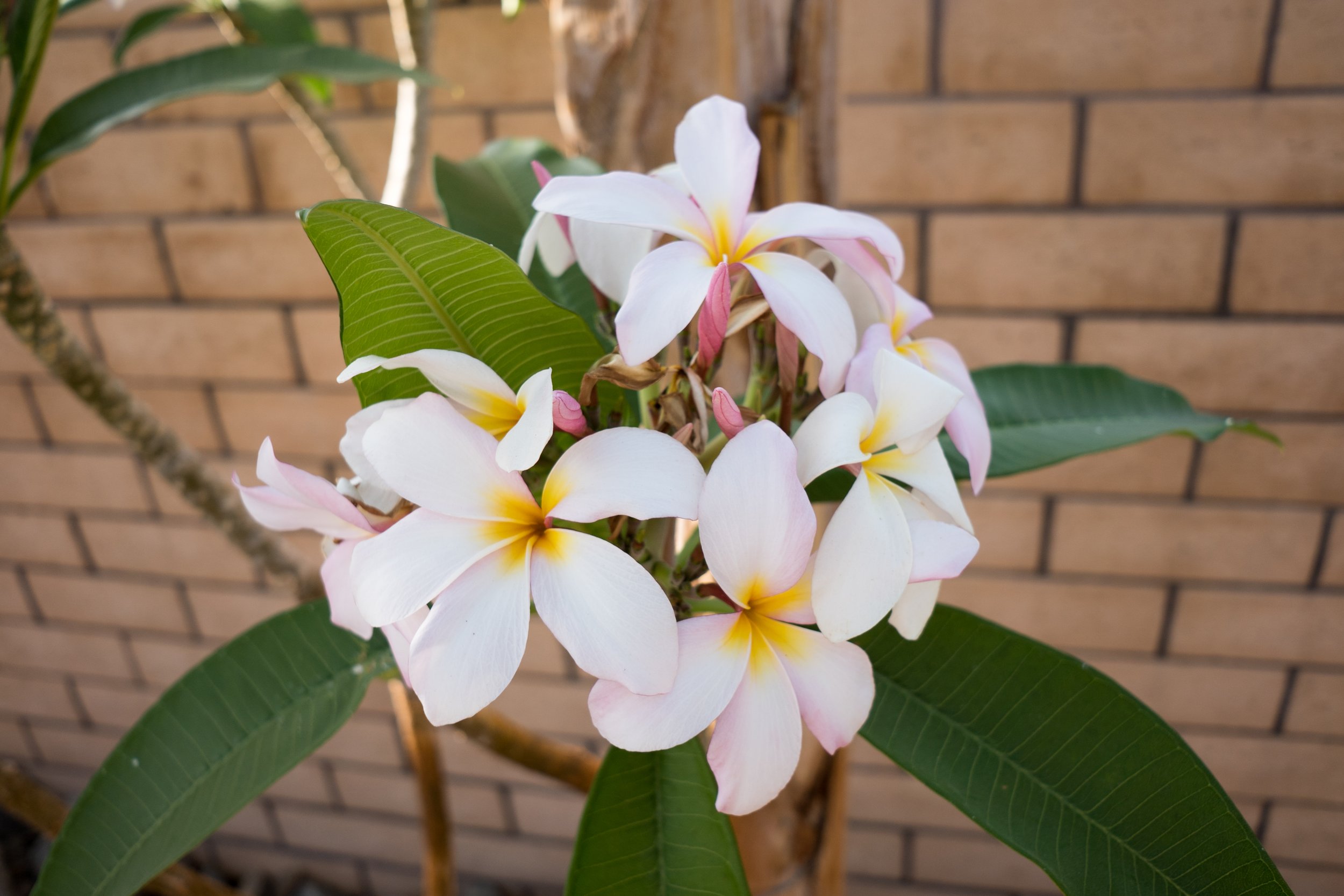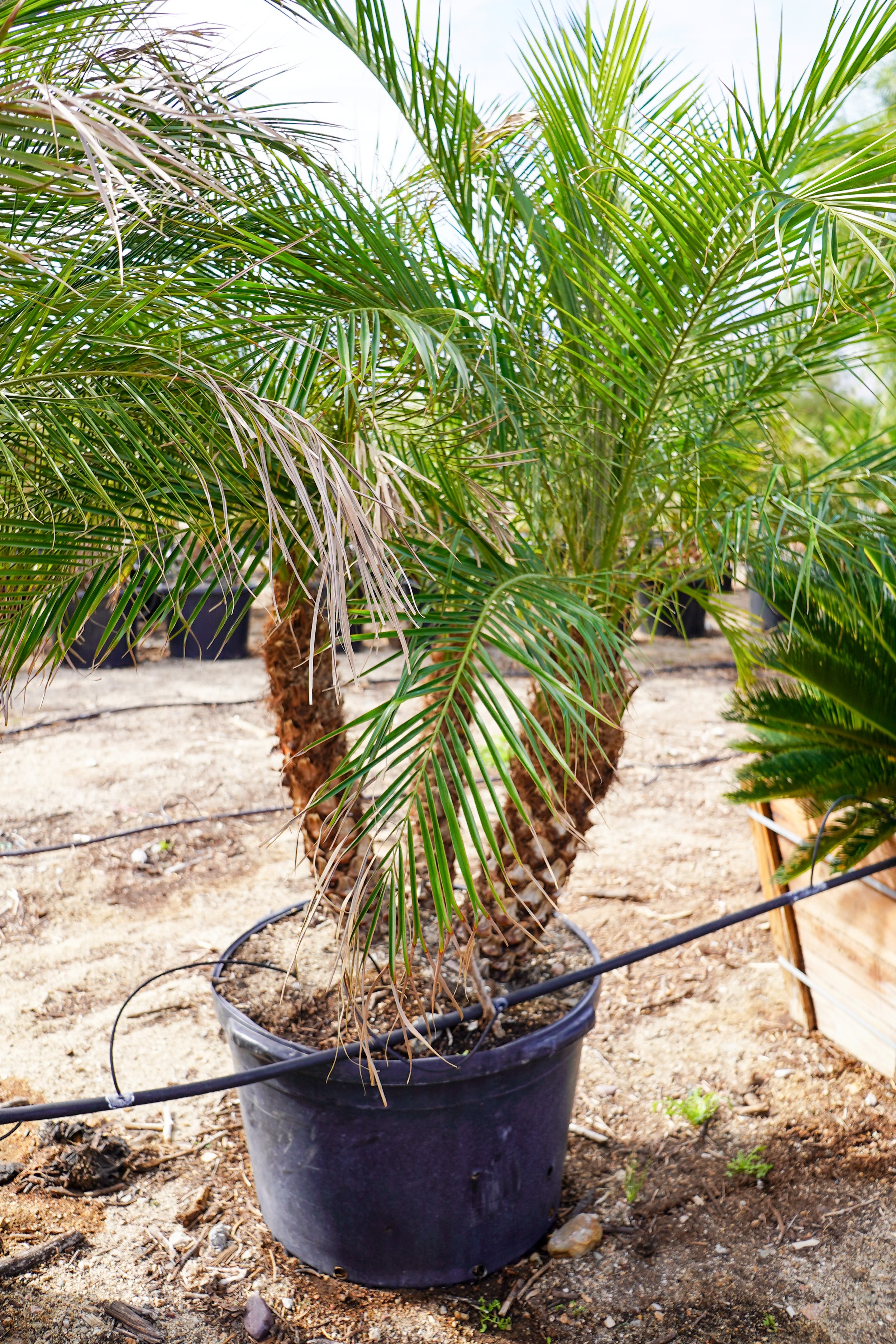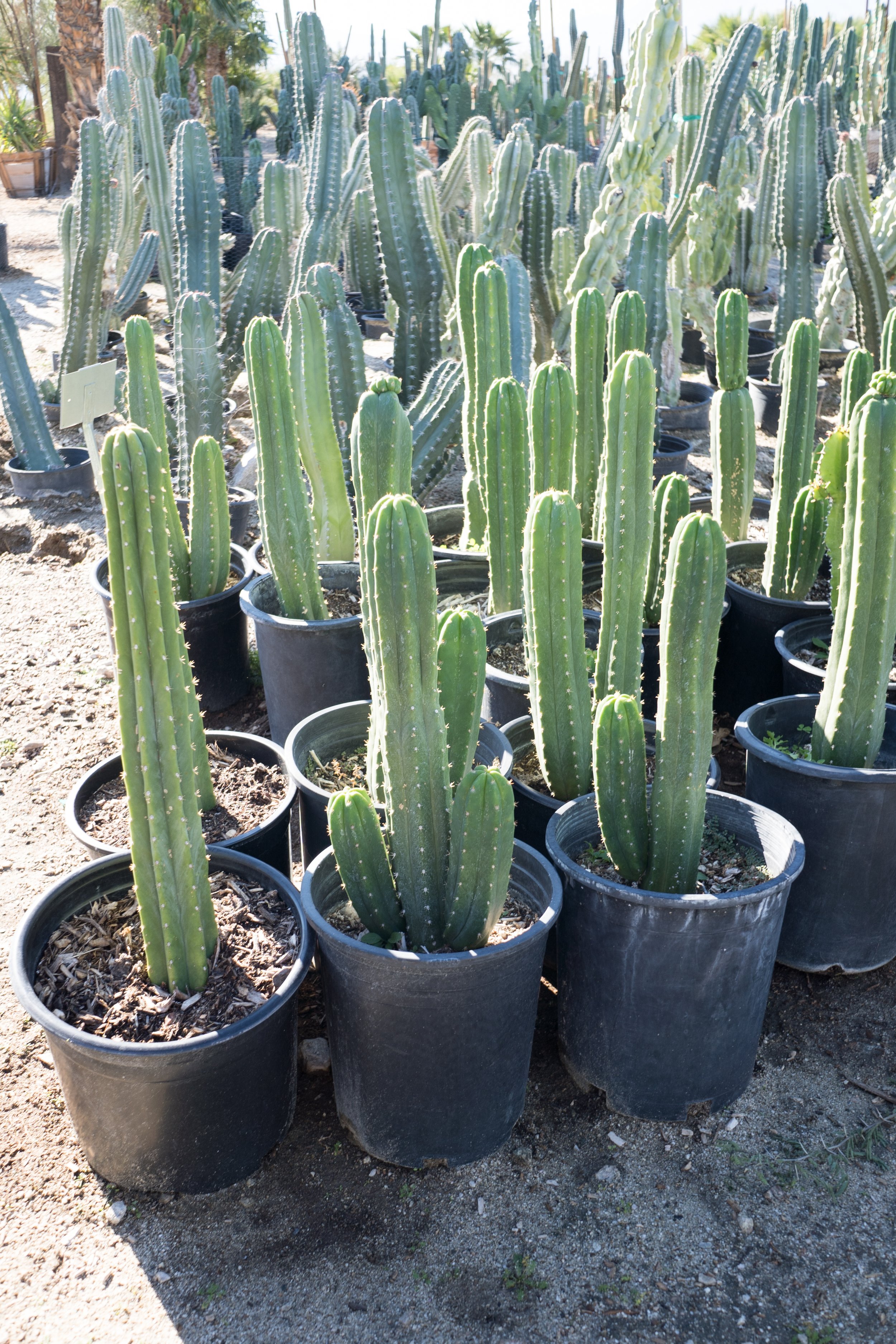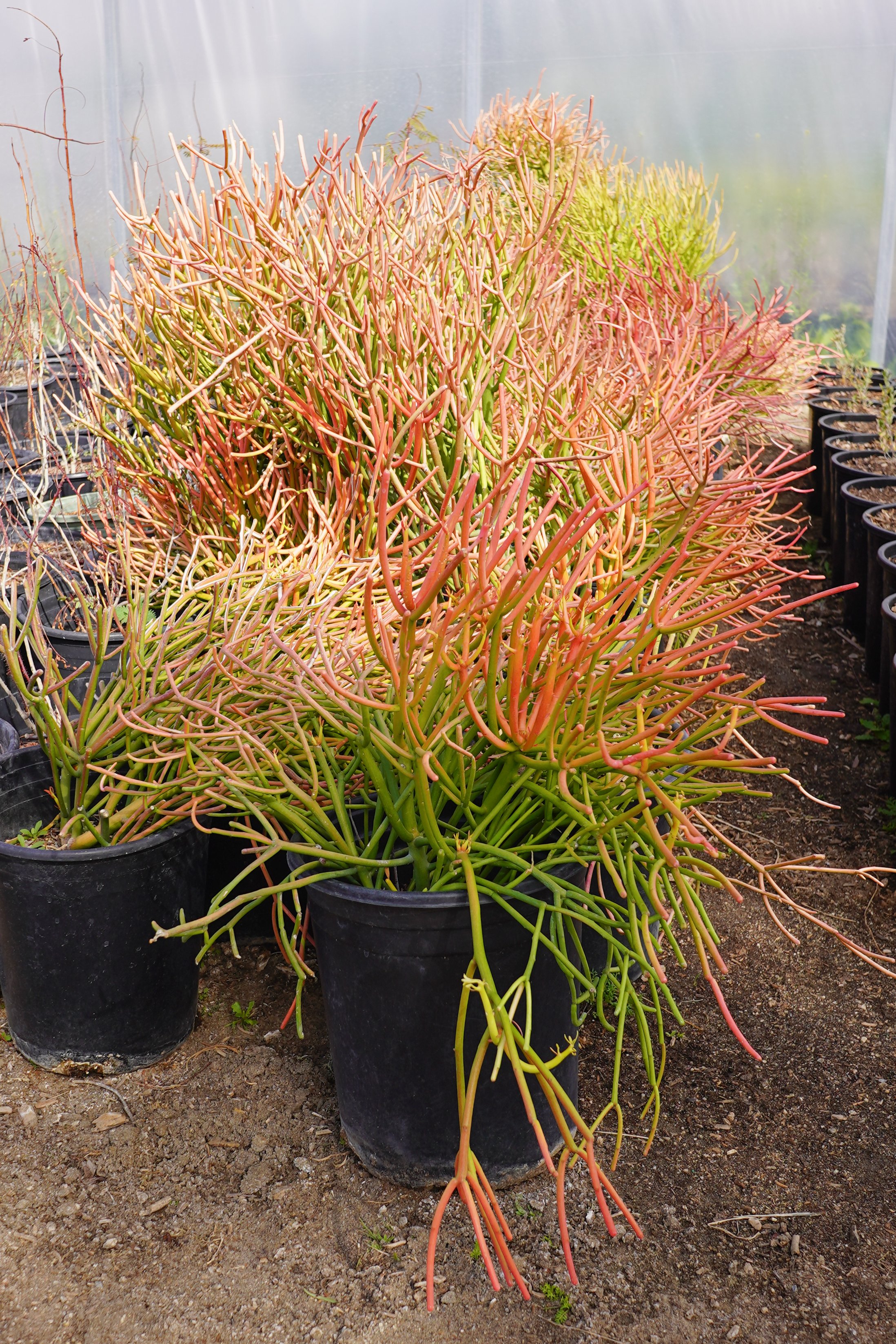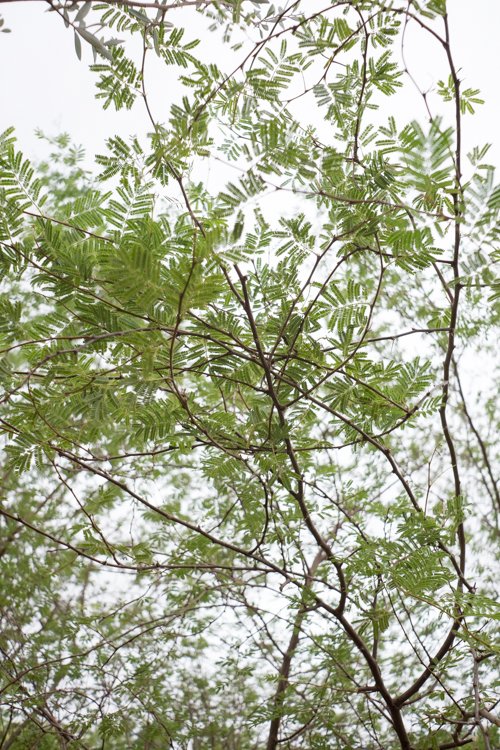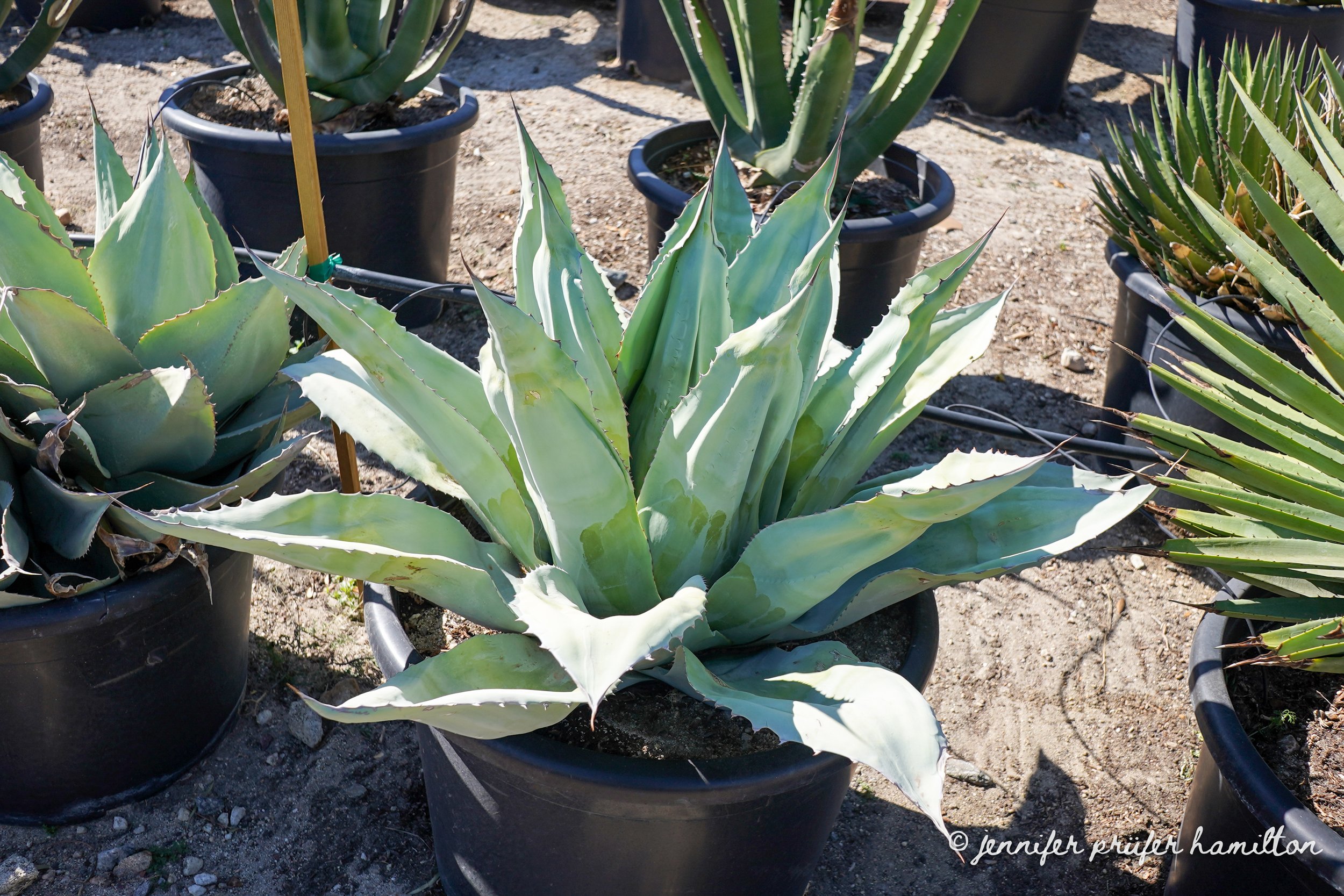All Plants
Acacia salicina, also known as willow acacia, is best known for its graceful, weeping appearance. Other than its beauty, here are some of its advantages: 1. Because…
Perhaps the beautiful shades of dark green (and magenta for the ‘Rubra’ variety), and chic, upright growing pattern are the reasons it has become a popular plant among…
If someone with a black thumb were to ask which tree they should plant in the Palm Springs region, African sumac would be one of our recommendations.
One reason for its popularity is that it makes quite the statement with its height capable of being taller than the average adult as well as its dramatic rosette shape.
Agave attenuata, also commonly known as Foxtail agave, can add a little cheer and whimsy to your garden. It's shaped like a flower in full bloom, and as it matures…
Agave ‘Blue Flame’ brings drama and a sense of movement with its leaves that appear to move in the wind like flames.
Agave 'Blue Glow' has distinct red and gold edges that contrast the blue-green leaves and glow like magic against light.
Agave desmettiana is a graceful agave with a soft rosette shape and curves at the end of the leaves. Its nickname, Smooth agave, hints at its non-spiny or prickly nature.
Agave geminiflora is a beautiful agave with its long and thin leaves that form an overall shape of round pom poms. Architectural and striking, it will only draw…
Agave ocahui is a small and elegant agave that adds a pop of deep green to a desert landscape. Ocahui means “fiber” in a native language from the Sonoran Desert region…
Agave Queen Victoria is a small agave with an interesting compact shape similar to an artichoke or pinecone. The leaves are an elegant shade of dark green…
Agave salmiana ferox is a giant succulent that looks like a living creature. It can reach a staggering size of 10 feet tall. Its massive leaves have spines along the margins…
Agave 'Sharkskin' got its nickname for its color and texture. It has a soft, muted gray-green color and waxy texture that begs to be touched. But be careful…
Agave weberi has large, wavy leaves that seem to dance like flames. It glows beautifully in the light while adding an interesting silhouette in the backdrop. It is also…
Aloe ‘Blue Elf’ is a popular aloe commonly seen in commercial and public areas in the Coachella Valley. Its beautiful leaves and flowers aside, the reason…
Aloe brevifolia means “short-leaved aloe.” Its short leaves and tight rosette shape give the aloe an inviting and floral look despite its many teeth alongside its leaves.
Aloe marlothii is a striking, even extraterrestrial-looking desert plant. Commonly known as Mountain Aloe, it has interesting hues of green, blue, purple, and red…
Like the common saguaro, the Argentine saguaro is an iconic symbol of the desert. It is striking and bold, standing tall even against the harsh desert sun.
Beavertail cactus is a small prickly pear variety that has cactus pads shaped like beavertails. The silvery green to purple hue adds interesting color to a desert…
The Bismarck palm is one of the more unusual-looking palm trees. They are massive in size. The trunk can grow to over 60 feet tall, and the palm fronds …
One rewarding aspect of keeping a Blue myrtle cactus is its fruits. Called "garambullos" by Mexicans and Guatemalans, these sweet fruits are also consumed…
This cactus has an unassuming, tidy columnar shape, growing tall and upright, but has unusual colors: blue stems and contrasting gold spines.
With its cheery red or yellow flower spikes, bottlebrush is an excellent choice for adding color to a hot and dry garden.
Frequently seen in vacation destinations, they evoke images of summer, beauty, and bliss.
This bougainvillea variety puts an interesting twist on the genus with its tall, upright stems that are topped with bright, magenta bracts that glow like a torch.
If you’re a fan of quirky plants, you’d probably appreciate the brain cactus. It has long, twisted pads that look like a brain or snakes.
Bunny Ear Cactus is often described as the smaller and cuter cactus sibling of the Prickly Pear. Fans of this cactus love to observe its new pads grow…
As a native plant of the Coachella Valley, the California fan palm is an iconic palm tree in this region as well as the entire state. It is frequently seen here in…
California pepper tree’s picturesque, weeping appearance is a familiar sight in warm regions of California. Fun fact- although it’s commonly thought to be a California…
Once you’ve seen a mature, blooming Candelabra aloe, you’ll immediately understand how it got its nickname. Multiple upright flower stalks with bright…
When small and very young, Candelabras give a fun and casual desert vibe with their stems that each form their own unique shape. As they grow…
Candelilla is a small desert shrub that adds unique texture to the landscape with its many, narrow stems. When it blooms, its small pink and white flowers add to…
Hailing from southern parts of Africa, Cape honeysuckle has become a popular ornamental plant across the world. Its bright, showy orange flowers and glossy green…
Cara Cara orange tree is one of the more unusual citrus trees we have to offer. Although Cara Cara oranges look like navel orange trees, when you peel them open…
Adding a tropical look to the landscape, cascabela theviata has bright green leaves and bright, colorful flowers. With its dense canopy, it provides excellent shade…
Cascalote tree is one of our top recommendations for a small, ornamental tree in warm or hot regions. It looks beautiful in courtyards and patios because…
If you’re looking for a beautiful, drought and heat-tolerant plant that can also be used for edible gardening, Cereus repandus would be a great choice.
Cleveland sage is an attractive desert shrub with pastel green leaves and bright violet flowers. When mature, numerous flowering stalks bloom all at once…
Creosote bush is one of the most iconic and abundant native plants we have here in the Coachella Valley. Scientists have long admired its remarkable ability to…
Dasylirion wheeleri is native to the deserts of the Southwest, including our region. It has adapted to droughts and a wide range of temperatures…
Its shape is often depicted in a lush desert oasis. Most notable are its giant feathery green-gray palm fronds, tall, sturdy trunk etched in a diamond-shaped pattern…
Support monarch butterflies with desert milkweed! Watching their larvae eat the stems and transform into caterpillars and then butterflies is quite a sight…
Looking for a tree that provides long, reliable, and showy blooms, even in the desert? Desert willow would be a great candidate!
The Devil’s Tongue cactus gets its name from its large, flat, and hooked spines. These strange-looking and colorful spines make the cactus a great…
Hailing from Southern Africa, Elephant food is a miracle plant that can resist the heat and drought of even the Coachella Valley desert.
Intense perfume, refreshing lemons, and enduring deep green leaves make for a very attractive and useful tree. So what are some qualities that set the Eureka lemon tree…
Austrocylindropuntia subulata is commonly known as Eve’s pin cactus. Native Peruvians commonly used the long and sharp thorns…
Feathery Cassia
Feathery cassia is known for its beautiful, feathery leaves and branches that gracefully sway in the wind. In the late winter, it is one of the early bloomers in our desert…
Ficus nitida is probably the most popular plant used for privacy hedges in Southern California, and is certainly so among our customers.
Firecracker plant adds a punch of bright coral and a burst of fountain-like movement to the garden.The distinct shape and growing habit allow you to be creative…
A memorable and highly sought-after cactus found in many desert gardens, Golden barrel cactus has exploded in popularity due to the rise of Mid Century Modern…
Golden Torch Cactus looks like what you'd imagine. A cactus with golden sparks. The flowers are mesmerizing, with their beautiful, large, white petals…
Hercules aloe is a striking aloe tree that commands attention with its beauty, unusual appearance, and sheer magnitude once mature.
Japanese spindle is a small to medium-sized tree that is often used as a hedge or border plant in gardens all around the world. It is very dense, highly tolerant…
Lisbon lemon tree is a widely grown lemon tree in California. Lisbon lemons are commonly seen in local grocery stores here as well. Compared to most lemon…
Madagascar Ocotillo is one unusual desert plant. From far away, it has a strange shape looking like a whimsical sea creature…
Imagine a plant that looks like a palm tree from a distance but like a cactus up close. That's Madagascar palm.
Here are some of the Mediterranean fan palm’s distinctive highlights: Tolerance to drought and a very wide range of temperatures, including below frost and triple-digit…
The Mexican Fence Post (Pachycereus marginatus) cactus makes a frequent appearance in upscale desert landscapes. It’s also one of our most popular plants.
Chances are, you've seen Mexican fan palms on a postcard depicting Palm Springs, Los Angeles, or San Diego.
The unusual and striking shape of the plant works well as an architectural focal point, but it also blends nicely with other desert plants of different shapes and forms.
Have you heard of key lime and bartender's lime? Those limes come from the Mexican lime trees. With its distinctive tart taste and smell, you may…
Mulga acacia is a common tree in its native habit, western Australia. Adapted to survive the tough hot and dry outback, it can take on harsh conditions…
Nolina microcarpa is commonly known as “bear grass,” referring to its grass-like appearance. Among knowledgeable desert gardeners and landscapers…
Octopus agave looks like what you may expect. It has long and narrow succulent leaves that twist and turn, kind of like octopus tentacles.
Old Man Cactus is the perfect nickname to describe this funny-looking cactus covered with wispy, white hair. Fun fact- these hairs help the cactus protect itself from…
Hailing from the Mediterranean, it has become a familiar sight in many parts of California, where it enjoys similar conditions to its origin, such as warm and dry weather.
Exquisite when in bloom, it attracts lots of attention with its thousands of showy yellow flowers. And when not in bloom, you can still enjoy its graceful shape and unusual..
Pampas grass is commonly found in gardens and preserves in California, but it is actually from South America. Due to its preference for warm weather…
Paper Spine Cactus is one of the most unusual-looking cacti ever. Take a look at the image below! The white ribbons you see are its signature papery spines that…
If you’re a fan of cactus flowers, you will probably like Parodia leninghausii. Very easygoing and low-maintenance, as long as you provide it with…
When young, the cactus looks like a peanut, but as it matures, it looks like a finger and starts to trail out of its planter.
The heavenly scent and striking flowers captivated the attention of many and became religious, cultural, and national emblems.
Pindo palms are very attractive medium-sized palms that grow to 15-20 feet tall. Large feather-shaped palm fronds curve up from the crown and outwards, adding…
A rather unusual cactus, Pine cone cactus is made up of pine cone-shaped segments. The cactus spreads by growing new segmented pads, similar to…
If you’re looking to add a fun, tropical look for less maintenance and space in your garden, make sure to consider adding this palm!
The Red bird of paradise is a remarkable flowering shrub that provides reliable, showy blooms for a long period of time, even in triple-digit heat.
With its beautiful red blush color, delightful flavor, and ability to store and transport easily, Redblush grapefruit quickly became an important crop that helped…
Red yucca is not your typical succulent. The thin leaves look like a clump of grass from a distance, but are actually succulent, and conserve water to fight…
A plant prized by the indigenous people of the Andes mountains for thousands of years, San Pedro Cactus has recently gained popularity in Southwestern…
Santa rita prickly pear is a popular cactus from our neighboring desert regions. Unlike many plants that have to bloom to add some color to the landscape…
Shoestring acacia got its nickname from its leaves, which look like long, thin shoestrings. These leaves are technically “phyllodes,” or modified leaves. They…
Silver cholla is native to our Colorado Desert and has a long history with the native people and wildlife of the region. The cholla adapted to heat and drought…
A common nickname for Stapelia is carrion flower, with “carrion” meaning “carcass.” Stapelia flowers smell like rotting flesh to attract flies for pollination.
The shrub looks like endless sticks growing out from sticks, just like the Pencil cactus. However, this ‘Sticks on Fire’ variety differs from the all-green Pencil cactus in…
Commonly known as Giant bird of paradise, Strelitzia nicolai is a popular ornamental plant. The star of the plant is the iconic crane flower, which can be…
The Sweet acacia tree is one delightful fragrant desert tree. Enjoy its very long, blooming season! Sweet acacia will reward you with a sweet honey-like fragrance from…
Tangelo is a cross between a tangerine and a pomelo. It was bred from a tangerine for its sweetness, ease of peeling, and deep orange color. The pomelo…
The tangerine tree is one of the most rewarding trees to grow. It’s beautiful and fragrant, and of course, it produces tangerines! Once the tangerine ripens…
Tecoma stans is a pretty flowering shrub that performs well in the Palm Springs region. It’s vigorous and hardy, bouncing back quickly after heavy pruning or damage…
Looking to add a medium-sized shade tree in the desert? Texas ebony tree should be on your list. It has become quite popular in the Southwest due to its dense…
Its heat and drought tolerance, quick growth, beautiful canopy, and yellow flowers made it a popular tree here in the Palm Springs region.
With its asymmetrical and bumpy stem, Totem cactus will stand out in any setting. Also, it is completely thornless and spineless, making it one of the few…
Turk’s cap cactus is a fun item to add to a succulent collection. Compared to the average cactus, it requires warm and pleasant temperatures…
Valencia orange tree is one of the best orange trees to grow in the desert due to its tolerance to heat, a variety of soil, and drought…
Whale’s tongue agave is a striking plant that blends well with other plants in a desert landscape. It has distinct leaves with a muted gray-green tone. The broad…
“Xylosma congestum” may not ring a bell to many Californians, but chances are, they’ve seen it before along the highway or in commercial spaces as trees …
Yucca rigida is one of our top recommendations for an elegant and architectural desert plant. Also commonly known as Blue yucca, it takes on an agave-like form…
If you’re looking to add sophistication to your drought tolerant landscape, Yucca rostrata comes highly recommended by many landscape designers…
Main Plant List
Acacia Saligna Tree
Agave Angustofolia
Agave Black Spined
Agave Blue Glow (Agave attenuata x Agave ocahui)
Agave Bovicornuta
Agave Colorata (Mecal Ceniza)
Agave Desert Spoon
Agave Filifera
Agave Lechuguilla (Shindagger)
Agave Lopantha
Agave Lopantha Quadricolor
Agave Majestic (Franzosinii)
Agave Montana (Mountain)
Agave Queen Victoria (Agave victoriae-reginae)
Agave Sharkskin
Agave Sisalana (Spanish Sword)
Agave Tequiliana
Agave Truncata (Artichoke Agave)
African Milk Tree (Euphorbia Trigona)
Aloe Vera Barbados
Aloe Vera Ferox
Aloe Rubroviolacea (Arabian Aloe)
Argentine Saguaro (Echinopsis Terscheckii)
Avocado Tree
Bearss Lime Tree
Beavertail Cactus (Opuntia Basilaris)
Bird of Paradise (Strelitzia Nicolai)
Bismarck Palm (Bismarckia Nobilis)
Blue Myrtle Cactus (Myrtillocactus Geometrizans)
Blue Torch Cactus (Pilosocereus azureus)
Blue Wooly Cactus (Pilosocereus Glaucescens)
Bottlebrush (Callistemon Little John)
Boxwood (Buxus Sempervirens)
Brain Cactus (Mammillaria Elongata Cristata)
Brazilian Pepper Tree
Brittle Bush (Encelia Farinosa)
Buckhorn Cholla (Cylindropuntia Acanthocarpa)
Bunny Ear Cactus (Opuntia Microdasys)
California Fan Palm (Washingtonia Filifera)
Calliandra Haematocephala
Canary Island Date Palm (Phoenix Canariensis)
Candelabra
Candelilla (Euphorbia Antisyphilitica)
Cape Honeysuckle (Tecoma Capensis)
Cape Plumbago (Plumbago Auriculata)
Cardon Saguaro (Pachycereus Pringlei)
Carolina Cherry Laurel (Prunus Caroliniana)
Cascalote Tree (Caesalpinia Cacalaco)
Cherry Plum Tree
Chinese Tallow Tree
Cleveland Sage (Salvia clevelandii)
Compass Barrel Cactus (Ferocactus Cylindraceus)
Coral Aloe
Crape Myrtle Tree
Creosote Bush (Larrea Tridentata)
Crown of Thorn (Euphorbia Milii)
Daisy Mandarin Tree
Damianita (Chrysactinia Mexicana)
Date Palm Tree (Phoenix Dactylifera)
Desert Spoon (Dasylirion Wheeleri)
Desert Willow Tree (Chilopsis linearis)
Dragon Cactus
Dyckia Platyphylla
Easter Lily (Echinopsis Oxygona)
Elephant Food (Portulacaria Afra)
Elephant's Foot (Ponytail Palm)
Euphorbia Ingens (Candelabra Cactus)
Euphorbia Resinifera
Euphorbia Trigona (African Milk Tree)
Eureka Lemon Tree (Citrus x Limon 'Eureka')
Eve’s Needle (Austrocylindropuntia Subulata)
Fat Boy Cactus
Feathery Cassia (Senna Artemisioides)
Ficus Nitida (Indian Laurel Fig)
Firecracker Plant (Russelia Equisetiformis)
Firesticks (Euphorbia Milii)
Firethorn (Pyracantha)
Fishhook Barrel Cactus (Ferocactus Wislizeni)
Flame of the Woods (Ixora Coccinea)
Flat Cut Out Cactus
Fountain Grass (Pennisetum Setaceum)
Golden Barrel Cactus (Echinocactus Grusonii)
Golden Prickly Pear
Golden Torch Cactus (Echinopsis Spachiana)
Gollum Jade (Crassula Ovata)
Green Barrel Cactus (Easter Lily)
Green Carpet – Natal Plum (Carissa Macrocarpa)
Green Cholla
Heavenly Bamboo (Nandina Domestica)
Ixora
Jacaranda Mimosifolia Tree
Japanese Oleander
Japanese Privet (Ligustrum Japonicum)
Japanese Spindle/Silver King (Euonymus Japonicus)
Lantana Variations
Lemon Ball Cactus (Parodia Leninghausii)
Lily Flax (Dianella Tasmanica)
Lily Flax (Variegated)
Lisbon Lemon Tree (Citrus Limon Lisbon)
Little John Plant (Melaleuca Viminalis, Weeping Bottlebrush)
Madagascar Ocotillo (Alluaudia Procera)
Madagascar Palm (Pachypodium Lamerei)
Mango Tree
Mediterranean Fan Palm (Chamaerops Humilis)
Melocactus azureus (Turk’s Cap Cactus)
Melocactus matanzus (Dwarf Turk’s Cap Cactus)
Mesquite Tree
Mexican Bird of Paradise
Mexican Blue Fan Palm (Brahea Armata)
Mexican Fan Palm (Washingtonia Robusta)
Mexican Feathergrass (Nassella Tenuissima)
Mexican Fence Post (Pachycereus marginatus)
Mexican Grass Tree (Dasylirion longissimum)
Mexican Honeysuckle Vine (Justicia Spicigera)
Mexican Lime Tree
Mexican Prickly Pear
Milk Weed (Asclepias Syriaca)
Mitre Aloe (Aloe Perfoliata)
Monster Cactus (Cereus Peruvianus Monstrose)
Moraea Iris
Moringa Oleifera
Moroccan Spurge (Euphorbia Resinifera)
Nandina
Navel Orange Tree
Nerium Oleander
Ocotillo Madagascar (Alluaudia Procera)
Old Man Cactus (Cephalocereus Senilis)
Organ Pipe (Stenocereus Thurberi)
Paddle Plant
Palo Verde Tree (Parkinsonia Aculeata)
Pampas Grass (Cortaderia Selloana)
Paper Spine Cactus (Tephrocactus Articulatus var papyracanthus)
Peanut Cactus (Echinopsis Chamaecereus)
Pencil Stick Tree (Euphorbia Tirucalli)
Peruvian Apple Cactus (Cereus Repandus)
Periwinkle (Vinca Minor)
Pygmy Date Palm (Phoenix Roebelenii)
Pine cone Cactus (Tephrocactus Articulatus)
Pink Lady (Callisia)
Pitaya Cactus (Stenocereus Queretaroensis)
Plumbago
Ponytail Palm (Beaucarnea Recurvata)
Prickly Pear (Opuntia)
Quercus Oak Tree
Rain Lily (Zephyranthes)
Red Chokeberry (Photinia Pyrifolia)
Red Headed Irishman (Mammillaria Spinosissima)
Red Mexican Bird of Paradise (Caesalpinia pulcherrima)
Red Yucca (Hesperaloe parviflora)
Redblush Grapefruit Tree (Citrus X Paradisi)
Redhook Cactus
Regal Mist Grass (Muhlenbergia Capillaris)
Rosemary (Salvia Rosmarinus)
Roses
Ruellia
Sago Palm (Cycas Revoluta)
Saguaro
San Pedro Cactus (Trichocereus Pachanoi)
Santa Rita Prickly Pear Cactus (Opuntia Santarita)
Shoestring Acacia (Acacia Stenophylla)
Senita Cactus (Pachycereus Schottii)
Silver Cholla (Cylindropuntia Echinocarpa)
Silver Dollar Cactus
Snake Plant (Dracaena Trifasciata)
Society Garlic (Tulbaghia Violacea)
Star Jasmine (Arabian)
Star Jasmine Vine
Sticks on Fire (Euphorbia Tirucalli 'Sticks on Fire')
Strawberry Madrone Tree
Sweet Acacia Tree (Acacia Farnesia)
Tangelo Tree (Citrus x tangelo)
Tecoma Bell (yellow, orange, other various colors)
Texas Ebony Tree (Ebenopsis Ebano)
Texas Ranger/Sage (Leucophyllum Frutescens)
Totem Pole Cactus (Lophocereus Schottii)
Tropical Bird of Paradise (Strelitzia Reginae)
Washingtonia Fan Palm
Wheel/Silver Dollar Cactus (Opuntia Robusta)
Xylosma Congestum / Xylosma Congesta
Yellow Bird of Paradise (Caesalpinia Gilliesii)
Yucca Aloifolia (Aloe Yucca, Spanish Bayonet)
Yucca Gloriosa (Spanish Dagger)

